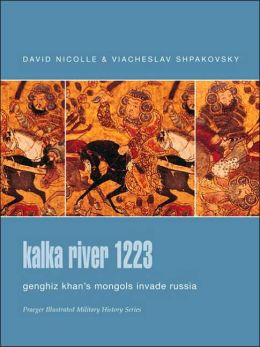I like the Osprey series. They have a wide variety of material that speaks to my arm chair historian as well as my role playing sensibilities. Their break up of book types provides bite sized chunks of history that have a ton of references to further materials for those so inclined.
Kalka River 1223 by D Nicolle & V Shpakovsky is illustrated by V Korolkov. And the art? That's another one of the reasons I love these books. In addition to showcasing a variety of real and recreated bits ranging from armor, clothing, and weapons, the artists that Osprey picks generally knock the ball out of the park and Victor Korolkov is no exception to that rule.
Another thing I like about these books is it showcases how little I know about the subject matter. This isn't something I have a problem with as if I knew it all, or heck, even remembered it all from other sources I've read, what fun would that be eh?
And the names! It's great to see some of the names for things in the book. Take some of the following for example:
Oldest or Best Guard: The most important constituent of Russian prince's armies. Heavy cavalary.
Youngest: Consisted of lightly armed archers. The guard is split between professionals and auxiliaries.
The Black People: The urban military called up by the Russian princes from towns under his control.
Simple naming conventions but quick ways to indicate difference in rank and importance. There's this type of fun stuff all over the Kalka River.
There are also lots of little reminders of things that make interesting bits to add to a campaign or to reinforce in existing campaigns if such situations are already there.
"Wars seemed to flare all across Europe and Asia between states large and small, between kings, princes, emperors and even between local barons." That set up right there provides a lot of back ground as to why an opposing force that was able to act in one unified position is able to attack a country that in theory, is much larger. The lack of combined military forces, of combined purposes, and combined method, allowed Genghiz Khan's Mongols to get farther than they should.
Indeed, in most fiction, this seems to be one of most settings problems. The good guys are just so organized and built into so much static state of being, that is strains the setting when wondering how they could fall or even why anyone would attack them. History is not like that for the most part.
There's a lot of great stuff in Kalka for those looking for some historical inspiration and a lot of great illustrations. Some of the bits showing the Russian metallic full face masks for example? I hope we see something like that for Khador in War Machine real soon. Great stuff.
Subscribe to:
Post Comments (Atom)






No comments:
Post a Comment